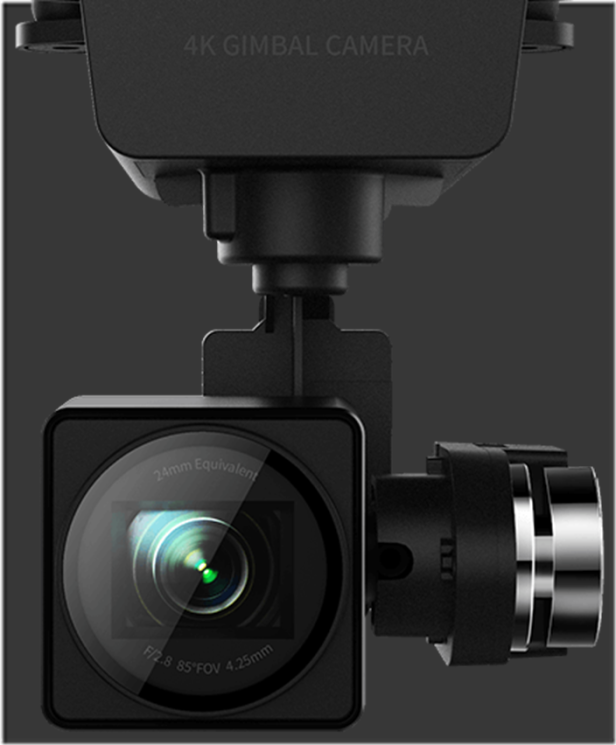XIRO Launches New Xplorer 2 with Obstacle Avoidance
Not too long ago, in a comparison review, we predicted that newcomer XIRO has what it takes to beat DJI in their own game.
More recently at CES 2016, they’ve proven just that — by releasing a new consumer aerial photography drone featuring obstacle avoidance.
While XIRO may not be the first to introduce such a feature in a consumer drone (Yuneec’s latest Typhoon H hexacopter also sports obstacle avoidance), its latest Xplorer 2 is probably the first drone in the same class as the Phantom 3 to boast having such a feature. Although there are rumors that the upcoming Phantom 4 will come with obstacle avoidance, DJI currently does not have any consumer drone on the market with such a feature.

Like its predecessor, the XIRO Xplorer 2 continues the same aesthetic direction featuring sharp lines and angles with a sleek black finish, albeit in a more complex fashion. The Xplorer 2 actually looks more like a stealth version of the 3DR Solo with a small periscope-like obstacle sensor at its top and does away with the cleaner x-shaped body that its predecessor was well-known for.
As the drone flies, the Xplorer 2’s obstacle sensor (which appears to be a LiDAR laser rangefinder) constantly rotates at a rate of 50 turns per second to spot obstacles such as walls or trees. Once the sensor detects an obstacle, it prevents the drone from flying into it. The Xplorer 2 will then stay put in the air and no amount of pilot input will allow it to come any closer to the detected obstacle. XIRO claims the Xplorer 2 has an anti-collision radius of about 6 meters.


We are not sure why XIRO decided to use such a complicated system instead of one that makes use of non-moving parts — as seen in the Typhoon H with its ultrasonic sensors. Having a LiDAR scanner rotate at high speed all the time will surely result in long-term mechanical wear and tear and subsequent failure. Perhaps LiDAR scanners are more accurate than ultrasonic sensors.



Besides obstacle avoidance, the Xplorer 2 has all the staple features that puts it on par with other drones in its class. It also features the same modular design seen in its predecessor.
XIRO Xplorer 2 specifications:
Diagonal Motor Distance: 350mm
Size: 500 X 500 X 190mm
Weight (Including Battery): 1400g
Max. Flight Distance: 1000m
Max. Flight Time: Approx. 25min
Battery Capacity: 5300mAh 4S LiPo
Charging Time: Approx. 1.5hrs
Camera Gimbal: 3-axis stabilized
Gimbal Control Accuracy: 0.025 degrees
Camera: HD Video 4K/30fps~1080P/120fps
Camera Sensor Dimensions: 1/2.3″
Camera Max. Resolution: 4000 X 3000
Camera FOV: 85º
At the heart of the Xplorer 2’s navigation system is a GPS/GLONASS dual-satellite setup which should provide highly accurate positioning outdoors. When flying indoors, where satellite signals are not available, the Xplorer 2 can switch to its ultrasonic sonar to get a position lock.
The new Xiro Xplorer 2 from the Shenzhen Zero UAV Tech was recently presented on the CES 2016. The Xplorer 2 has unique design and one very important safety feature – obstacle avoidance. The guys from Zero UAV call it anti-collision system, but it’s the same thing.
Like the SMD Mirage drone, the Xplorer 2 have ultrasonic sensors on board, but uses these for altitude control. Its 360° anti-collision system is based on a camera module, that uses ground texture and optical flow – LiDAR. This technology isn’t groundbreaking and its extremely important how well it is implemented by the software. I have already discussed this problem in my Kickstarter Drone Guide.
When flying outdoors the drone will use both GPS and GLONASS satellite systems for navigation. Thanks to these you will have the following
Features:
One-key takeoff landing
Assisted hover a.k.a. position hold
Lost control protection
One-key return home

A 4K capable camera and 3-axis gimbal are going to be pretty standard in 2016. The Xplorer 2 has both, so you will be able to record crystal clear and smooth aerial videos and unleash your creativity. Shooting at full HD will even let you capture up to 120fps and make great slow motion videos.
Using your smartphone as a display you can get a live preview of your video in 720p quality. According to Zero UAV a distance of up to 1km should be possible.

The remote control (transmitter) looks great and at the same time should give you perfect control of your Xplorer 2. Using it you can control the camera and the 3-axis gimbal. You have buttons for “Return to home” and “Takeoff landing” as well as one switch for “Altitude mode” and “GPS mode”. There is also a LED indicator for the remote control battery level.
Additional flight modes are available when using the Xiro App:
Follow me mode
Autonomous flight using pre-defined waypoints
Surround POI
Last but not least: 25min flight time. This depends much on the flying style and weather conditions, but in theory the 5300mAh 4S smart LiPo battery should provide the needed power for a 25min flight.

Summary: The 350mm type drone looks awesome in my opinion. And for 1.499$ I am sure the 4K video will be great too. My only concern will be how good the 3-axis gimbal stabilize the video. As a pilot with a lot of flight experience, I find the anti-collision system the best feature of it. I hope that the hardware and software engineers at Zero UAV had implemented it in the best possible way. Pretty excited to see how it really performs in flight. Still no release date for the Xplorer 2, but it should be available soon.

